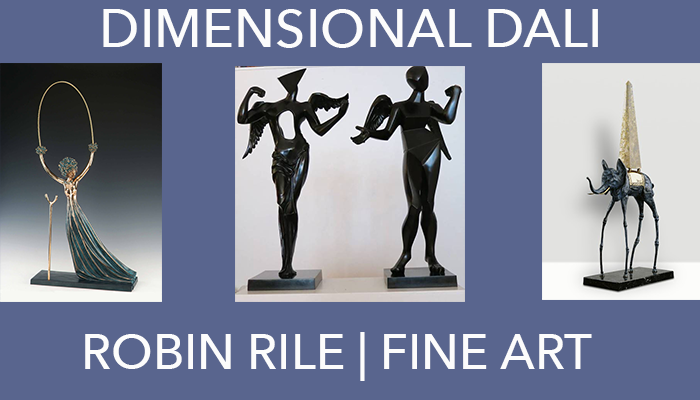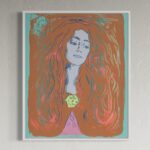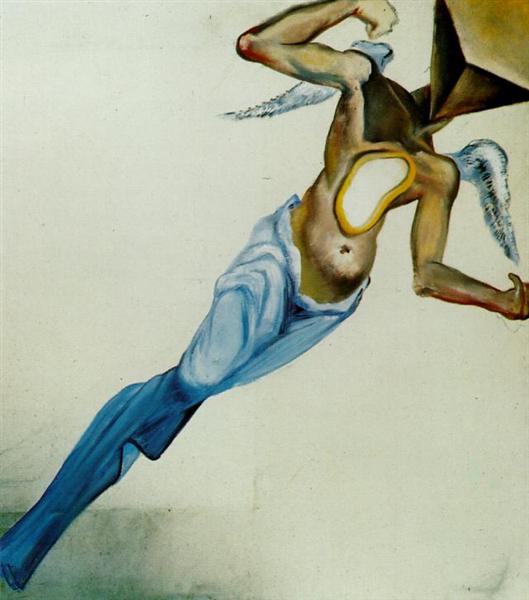 Throughout his career, the ever-innovative and dimensional Salvador Dali revisited favorite themes such as the angel and the elephant in a variety of mediums. Encyclopedic attempts at broad interpretations of Salvador Dali’s works often fall short of the highly personal meanings inherent in each of the artist’s individualized works that repeat familiar themes throughout various mediums.
Throughout his career, the ever-innovative and dimensional Salvador Dali revisited favorite themes such as the angel and the elephant in a variety of mediums. Encyclopedic attempts at broad interpretations of Salvador Dali’s works often fall short of the highly personal meanings inherent in each of the artist’s individualized works that repeat familiar themes throughout various mediums.
“Surrealist Angel” is a monumental bronze sculpture that represents the angel trope that permeated Dali’s works in all mediums. The winged androgynous figure can be seen as Dali’s response to the “Nike of Samothrace” in a surrealist exploration of the inner psyche. Dali saw angels as transcendently pure creatures that served as communicators between the artist and God. Further religious connotations can be read in the triangular head, which represented the triad of Dali’s homes in Figueras, Pubol and Port Lligat, as well as the Holy Trinity. The mythical “Surrealist Angel” communicates a powerful statement of  inspired creativity as gifted from the heavens. The angel is also a muse, one whose central void could mirror that of a guitar or an invisible heart in one’s artistic passions.
inspired creativity as gifted from the heavens. The angel is also a muse, one whose central void could mirror that of a guitar or an invisible heart in one’s artistic passions.
“Cubist Angel”, another monumental bronze, is a less religious exploration of Dali’s angelic theme that combines classical and cubist forms into an androgynous being. When viewed with its partner “Surrealist Angel”, “Cubist Angel” makes a distinct statement in the scope of Dali’s work. The pair of angels forms the perfect representation of Dali’s interest in concepts such as symmetry, sexuality, and the human form. These interests are reinforced by the use of a base similar to that of the “Nike of Samothrace” in order to establish Dali’s angels as a culmination to the modern representation of the victorious angel figure.
 Dali’s illustrations of “Alice’s Adventures in
Dali’s illustrations of “Alice’s Adventures in 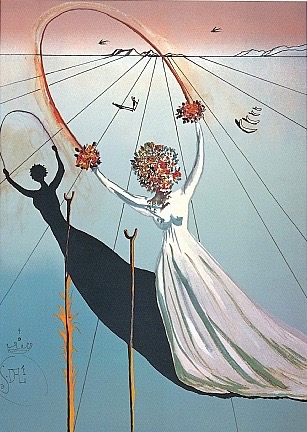 Wonderland” by Lewis Carroll in 1969 have become one of his most sought-after suites; yet in typical dimensional Dali fashion he repeated his rendition of Alice with her magical jump-rope in varied media, including the “Alice in Wonderland” bronze sculpture. The result is an imaginative brainchild of Carroll’s whimsically mathematical narrative and Salvador Dali’s affinity for both the curious and logical. Dali’s bronze vision of Alice is one of prolific effect that truly embodies the fantastical nature of the famed story, as well as the core of Dali’s surrealism and his collaborative efforts as an artist. Walt Disney, a longtime friend and collaborator, produced the movie “Alice in Wonderland” years before with animations heavily recalling psychedelic surrealism, which may have inspired the dimensional Dali’s later eccentric depictions.
Wonderland” by Lewis Carroll in 1969 have become one of his most sought-after suites; yet in typical dimensional Dali fashion he repeated his rendition of Alice with her magical jump-rope in varied media, including the “Alice in Wonderland” bronze sculpture. The result is an imaginative brainchild of Carroll’s whimsically mathematical narrative and Salvador Dali’s affinity for both the curious and logical. Dali’s bronze vision of Alice is one of prolific effect that truly embodies the fantastical nature of the famed story, as well as the core of Dali’s surrealism and his collaborative efforts as an artist. Walt Disney, a longtime friend and collaborator, produced the movie “Alice in Wonderland” years before with animations heavily recalling psychedelic surrealism, which may have inspired the dimensional Dali’s later eccentric depictions.
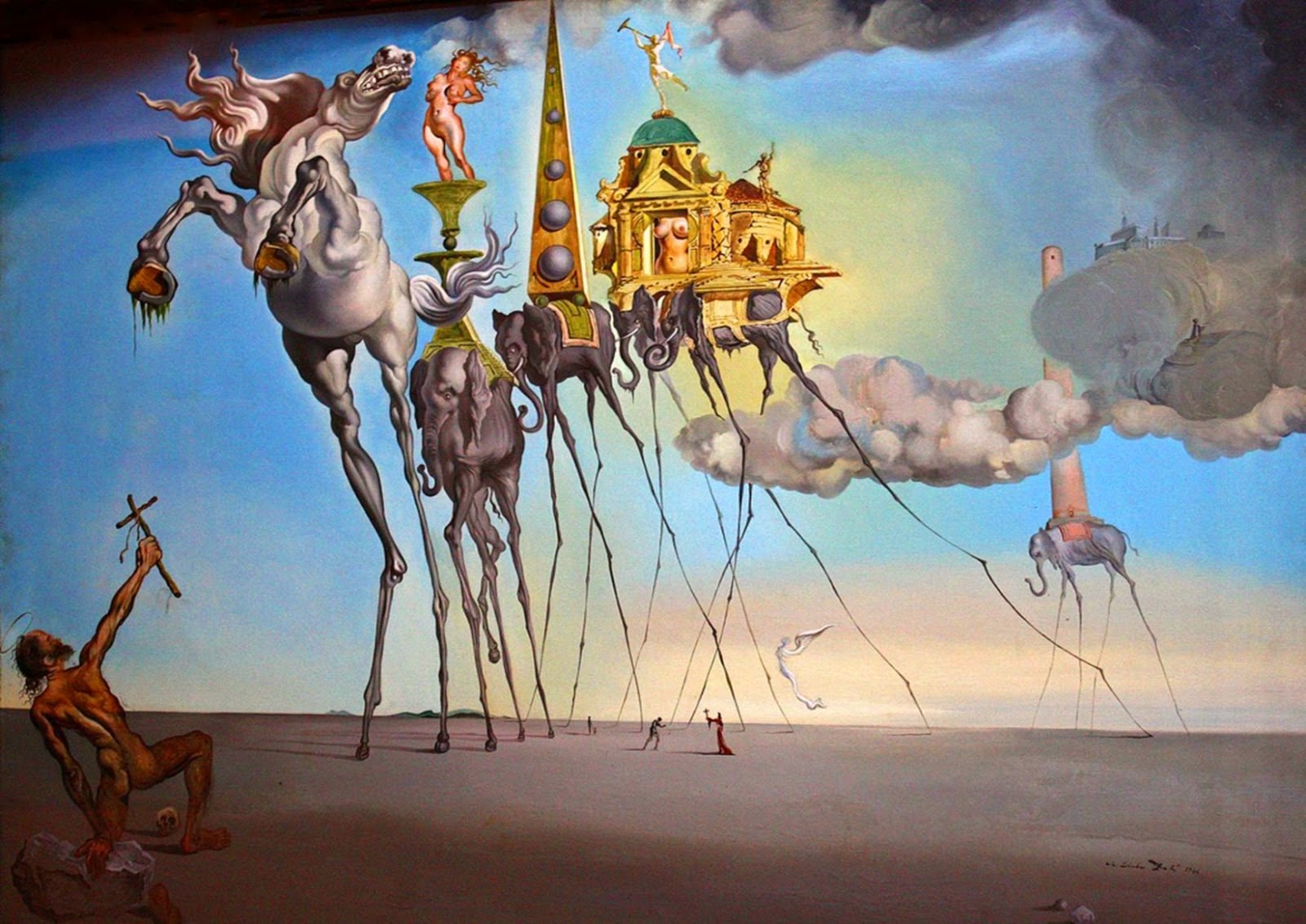 The elephant was a common motif that Dali reproduced with increasing importance across multiple mediums, perhaps most recognizable in his painting “The Temptation of Saint Anthony” located in the Royal Museums of Fine Arts of Belgium. Traditionally associated with notions of exotic strength and importance, Dali’s elephants feature fragmented, bony, and elongated legs
The elephant was a common motif that Dali reproduced with increasing importance across multiple mediums, perhaps most recognizable in his painting “The Temptation of Saint Anthony” located in the Royal Museums of Fine Arts of Belgium. Traditionally associated with notions of exotic strength and importance, Dali’s elephants feature fragmented, bony, and elongated legs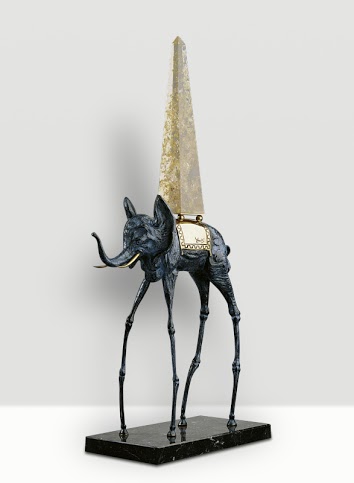 that challenge the elephant’s existent nature. “Space Elephant” is a work that represents the absurdist and psychoanalytic vein of Dali’s surrealism. The elephant carries an obelisk on its back, reminiscent of the Bernini sculpture “Elephant and Obelisk” that combines the obelisk’s monumental durability with the prestige and fortitude of the elephant in a testament to power. “Space Elephant” is a weightless rejection of the animal’s physicality, and creates an ambiance of dreamlike instability that is emblematic of Dali’s process of individuation through art, and man’s nature to strive towards the heavenly realm.
that challenge the elephant’s existent nature. “Space Elephant” is a work that represents the absurdist and psychoanalytic vein of Dali’s surrealism. The elephant carries an obelisk on its back, reminiscent of the Bernini sculpture “Elephant and Obelisk” that combines the obelisk’s monumental durability with the prestige and fortitude of the elephant in a testament to power. “Space Elephant” is a weightless rejection of the animal’s physicality, and creates an ambiance of dreamlike instability that is emblematic of Dali’s process of individuation through art, and man’s nature to strive towards the heavenly realm.
“Space Elephant” by Salvador Dali, 1980, Bronze and Acrylic Sculpture
“Alice in Wonderland” by Salvador Dali, 1977-1984, Bronze Sculpture
FOR PAINTINGS, SCULPTURES, AND PRINT WORKS AVAILABLE FOR PURCHASE BY SALVADOR DALI OR TO SELL WORKS BY SALVADOR DALI, CONTACT:
ROBIN RILE | FINE ART
info@robinrile.com or (813)340-9629
